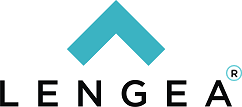Cal/OSHA has released its revised Safety and Health Protection on the Job poster, effective July 2025. California employers must display the updated notice in a clearly visible location. Failure to post it, or to comply with the rules it summarizes, can lead to significant penalties.
Employer Duties
The updated notice reinforces several key requirements:
- Maintain a safe workplace. Identify and correct hazards and ensure employees are trained for job-specific risks.
- Maintain a Written IIPP. Maintain an Injury and Illness Prevention Program that meets Title 8, Section 3203 and make it accessible to employees.
- Report serious incidents within 8 hours. Fatalities, serious injuries, and illnesses must be reported within eight hours. The minimum penalty for failing to report is $5,000.
- Correct hazards promptly. Employers who ignore known dangers face civil fines, criminal charges, and possible incarceration.
Employer Prohibitions
Employers must not assign tasks that violate Cal/OSHA regulations, expose workers to hazardous substances without proper protection, or allow untrained employees to perform hazardous work.
Hazardous Substances
Employers who handle substances listed under Title 8, Section 339 or covered by the Hazard Communication standard must:
- Provide employees with information, training, and access to safety data sheets.
- Supply safety data sheets promptly when requested by employees, representatives, or physicians.
- Maintain accurate exposure records and notify employees when exposure exceeds Cal/OSHA limits.
- Allow employees or their representatives to observe exposure monitoring.
Employees also have the right to view and copy their own medical and exposure records.
Cal/OSHA Inspections
Inspections may occur when an employee files a complaint, after a serious incident, or through routine enforcement. Employers and employee representatives may accompany the investigator, and employees may be interviewed about workplace conditions.
Employee Rights
Employees are entitled to:
- File confidential complaints about unsafe conditions.
- Refuse unsafe work that violates safety standards.
- Access the employer’s IIPP, training records, and exposure information.
- Protection from retaliation for reporting hazards or asserting safety rights.
Penalties
Citations and fines may follow complaints, inspections, or workplace incidents. Penalty amounts depend on the severity of the violation. Willful violations causing death or permanent injury can result in fines up to $250,000 for individuals and $1.5 million for corporations, along with possible imprisonment.
Title 8, Section 339 — List of Hazardous Substances
- Section 339 is California’s list of chemicals known to cause harmful effects (essentially Cal/OSHA’s “Hazardous Substances List”).
- Many substances used in medical aesthetics appear here, especially if they are industrial chemicals, solvents, or preservatives.
- Examples potentially relevant to med spas:
- Formaldehyde (sometimes present in certain chemical peels, hair-smoothing or keratin products)
- Hydrogen peroxide (used in skin lightening and laser post-care)
- Lidocaine and other anesthetics (depending on formulation and concentration, can appear in related occupational hazard lists)
- Glutaraldehyde (if used for disinfection/sterilization)
- Isopropyl alcohol (common antiseptic, flammable chemical)
- Even if a chemical isn’t specifically listed, if it’s hazardous under OSHA’s definition (flammable, corrosive, toxic, sensitizer, etc.), it is covered.
Hazard Communication Standard (Cal/OSHA HCS)
The Hazard Communication Standard requires that all employers who use hazardous chemicals must:
- Maintain Safety Data Sheets (SDSs) for every hazardous substance.
- Label containers properly (original manufacturer labels or workplace labels).
- Have a written Hazard Communication Program.
- Train employees on safe handling, protective equipment, and emergency measures.
In med spas, this applies to:
- Injectables (botulinum toxin, lidocaine, compounded medications like GLP-1s if hazardous characteristics apply).
- Chemical peels (glycolic acid, trichloroacetic acid (TCA), salicylic acid).
- Laser/esthetic prep products (flammable topical anesthetics, alcohol preps).
- Cleaning/disinfection products (bleach, glutaraldehyde, hydrogen peroxide).
What Med Spas Must Do in California
- Maintain a Chemical Inventory: Keep an updated list of all hazardous chemicals onsite.
- Build a SDS Library: Ensure SDSs are available to all staff for every chemical.
- Provide Ongoing Training: Provide new hire and annual training on chemical hazards, labeling, PPE, and exposure response.
- Label Every Container: Every secondary container (e.g., a small cup of peel solution poured from the main bottle) must be labeled.
- Create a Written Program: Have a written Hazard Communication Program describing how compliance is maintained.
Key Takeaway
By July 2025, all California employers should post the updated Cal/OSHA notice and review their workplace safety practices. For Med Spas and other industries handling chemicals, maintaining an effective IIPP, training employees, correcting hazards, and reporting serious incidents are essential to compliance and worker protection. Planning ahead eliminates citations, reduces possible penalties, and employee claims.


